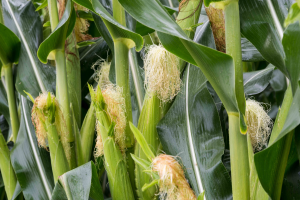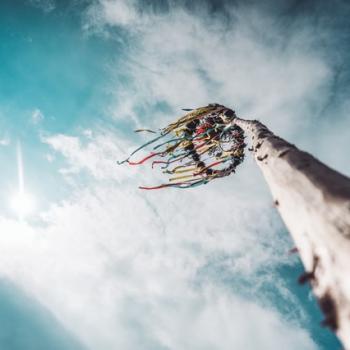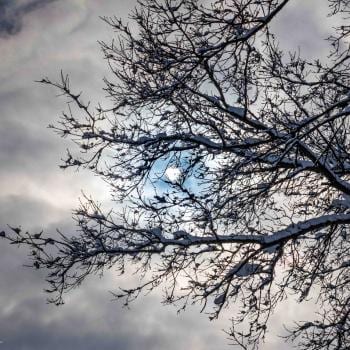Corn Mother
 Lie down with me
Lie down with me
here where the heavy loam
smells like rainwater.
Your long creamy
hair falls golden
under the round moon,
soothes my shoulder,
fire in your eyes,
your musk on my tongue.
We’ve known thunder,
you and I, and we’ve known
cold—when love stings
like a wasp—comes
and goes like desire.
Many yearn for your
sweet milk, for arepas fried
warm and brown stuffed
with cheese and black beans,
your intoxicating chicha.
Dance with me,
my hot fingers need your
translucent skin.
Tomatoes are just now ripening in this corner of southwest Michigan. The unique, tantalizing scent that hits my nose when I slice into one transports me to the back stoop of a farmhouse in Iowa where I sat beside my father as a girl in braids, slurping a plump tomato warm from the sun.
It was our garden redolent with beets, carrots, green beans, and tomatoes that first schooled me in love for the land. When Daddy opened the back gate in early spring and drove the tractor into our big back yard to turn over earth, I took to it with a rake in my bare feet, squeezing my toes into the cool soil.
The Wheel of the Year, the turning of the seasons, is part of my DNA, and I can’t help but mourn that many of today’s children are unaware of Mother Earth’s abundance, knowing only food that to a very young child might seem to have been grown in plastic, cardboard or aluminum and found on supermarket shelves.
Our agrarian ancestors celebrated Lammas, a harvest festival, giving thanks for the first fruits of summer: August 1 in the Northern Hemisphere and February 1 in the Southern. That’s when ceremonial loaves are baked using the first grain harvested. The name, Lammas, stems from the Anglo-Saxon festival, hlaefmass, or loaf festival. In later centuries, Christians brought loaves to church and clergy blessed the fields.
Today, some who honor Earth-based spirituality translate first fruits as not only the first harvest—grain; luscious blackberries; warm, red tomatoes; and peaches that cannot be eaten without juice running down your chin—but also as first fruits of our own endeavors.
What have we done to help the land?
So as not to fall into despair at climate change’s havoc—droughts creating refugees; wildfires burning globally, even in Sweden’s Arctic; drenching summer rains producing unprecedented flooding; ocean acidification even as the seas rise—I eagerly devour the Environmental Defense Fund’s quarterly newsletter, Solutions(visit edf.org). The current issue describes EDF’s plan, in conjunction with its partners, to launch a new satellite, MethaneSAT, to identify and monitor methane emissions.
This is important because change is based on data, and little data is available on methane emissions that account for one-quarter of current global warming. EDF reports the satellite will track methane leaking from oil and gas fields and also from agriculture. The goal is precision monitoring, which is lacking from other sources.
Cut methane emissions and you reduce a powerful greenhouse gas. EDF wants to see a 45 percent reduction in oil-and-gas-generated methane in 20 years, a move that equals the closure of about one-third of coal-fired power plants worldwide.
Technology alone cannot roll back the impact of greenhouse gas emissions polluting our atmosphere since the Industrial Revolution in the 1700s. It will take all of us working together to keep the planet habitable for diverse species, including our own. But a new and improved tool to engender major cutbacks in methane emissions? That would be a fine first fruit to celebrate.
My thanks to Atlanta Reviewwho first published “Corn Mother.”


















